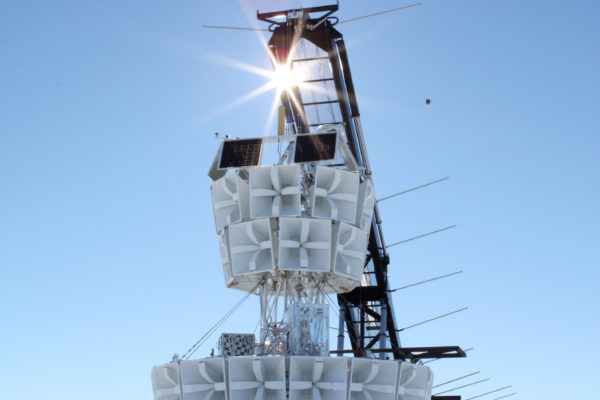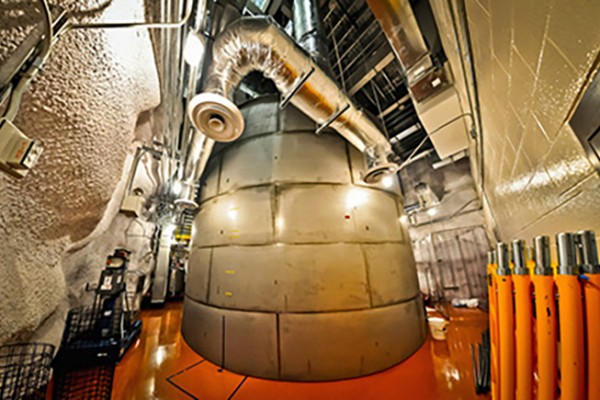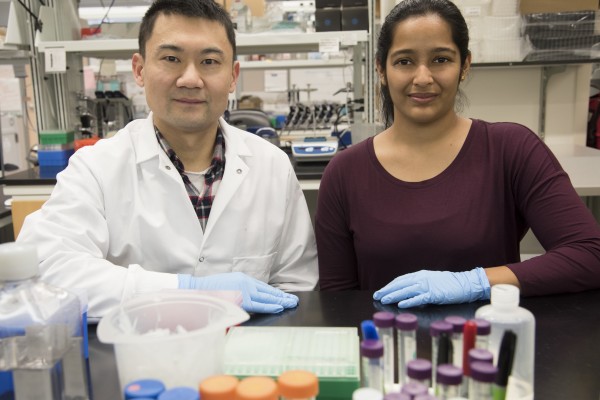Most-read stories of 2014: In the laboratory
This year, Washington University researchers advanced our understanding of schizophrenia and Alzheimer’s disease, and developed devices to help surgeons see cancer cell and scientists to capture new vistas through the world’s fastest 2-D camera.
Research opens opportunities to develop targeted drug therapy for cardiac arrhythmia
A team of biomedical engineers in the School of Engineering & Applied Science at Washington University in St. Louis has made an important discovery about how a channel in the heart responds to membrane voltage, which causes the channel to open and also determines the properties of electrical signals that control the heart, contrary to what had previously been believed.
ANITA III launched over Antarctica
Calm winds allowed the ANITA III experiment to be launched into the polar vortex above Antarctica on Dec. 17. The instrument consists of 48 radio receivers that are listening for pings that will be generated when ultra-high-energy cosmic rays generate radio-frequency bursts that reflect off the ice and up to the instrument at a float altitude of 120,000 feet, four times higher than commerical airliners cruise.
Hunting for dark matter in a gold mine
An astrophysicist at Washington University in St. Louis is among the team hunting for an elusive particle called a WIMP, that may be the fundamental particle of dark matter. To catch this notoriously wily particle they have built a detector consisting of a large vat of xenon in a deep chamber of a played-out gold mine in the Black Hills of South Dakota.
World’s fastest 2-D camera may enable new scientific discoveries
A team of biomedical engineers in the School of Engineering & Applied Science at Washington University in St. Louis, led by Lihong Wang, PhD, the Gene K. Beare Distinguished Professor of Biomedical Engineering, has developed the world’s fastest receive-only 2-D camera, a device that can capture events up to 100 billion frames per second.
Most American presidents destined to fade from nation’s memory, study suggests
American presidents spend their time in office trying
to carve out a prominent place in the nation’s collective memory, but
most are destined to be forgotten within 50-to-100 years of their
serving as president, suggests a study on presidential name recall
released Nov. 27 by the journal Science.
Tibetan cultures settled world’s ‘roof top’ 3,600 years ago, study finds
Xinyi Liu Barley harvest in Zuoni County, Gannan Tibetan Autonomous Prefecture. An archaeology dig on the “roof of the world” has yielded evidence that humans figured out much earlier than previously known how to survive year-round in farming and grazing settlements in extreme high-altitude regions of the Tibetan Plateau, finds research released Nov. 20 in […]
Three WUSTL faculty named AAAS fellows
Three faculty members at Washington University in St. Louis have been named fellows of the American Association for the Advancement of Science (AAAS), the world’s largest general scientific society. They are Mary C. Dinauer, MD, PhD, David M. Holtzman, MD, and Robert G. Kranz, PhD.
Exploring the genomes of mice and men
New research by Ting Wang, PhD, (left) and graduate student Vasavi Sundaram has uncovered some striking differences in the genomes of humans and mice that can help scientists determine when a mouse may be a good stand-in to study human biology and disease.
It’s not always the DNA
Scientists have mostly ignored mRNA, the molecule that ferries information from DNA to the cellular machines that make proteins, because these DNA transcripts are ephemeral and soon destroyed. But mRNA can be just as
important as DNA scientists at Washington University in St. Louis say. They found that oxidized messenger RNA jams the cellular machines that
make protein. The failure to clear the jams and chew up bad messengers
is associated with neurodegenerative diseases such as Alzheimer’s.
Older Stories




